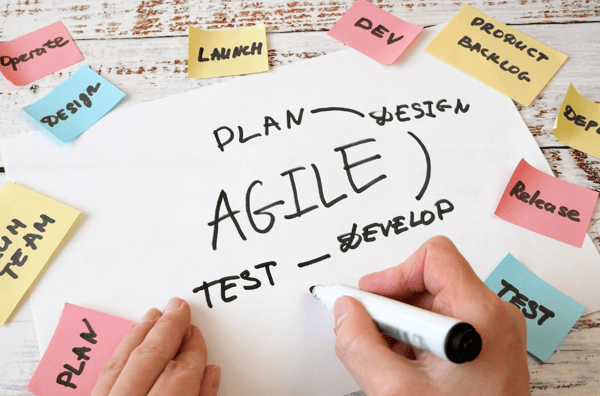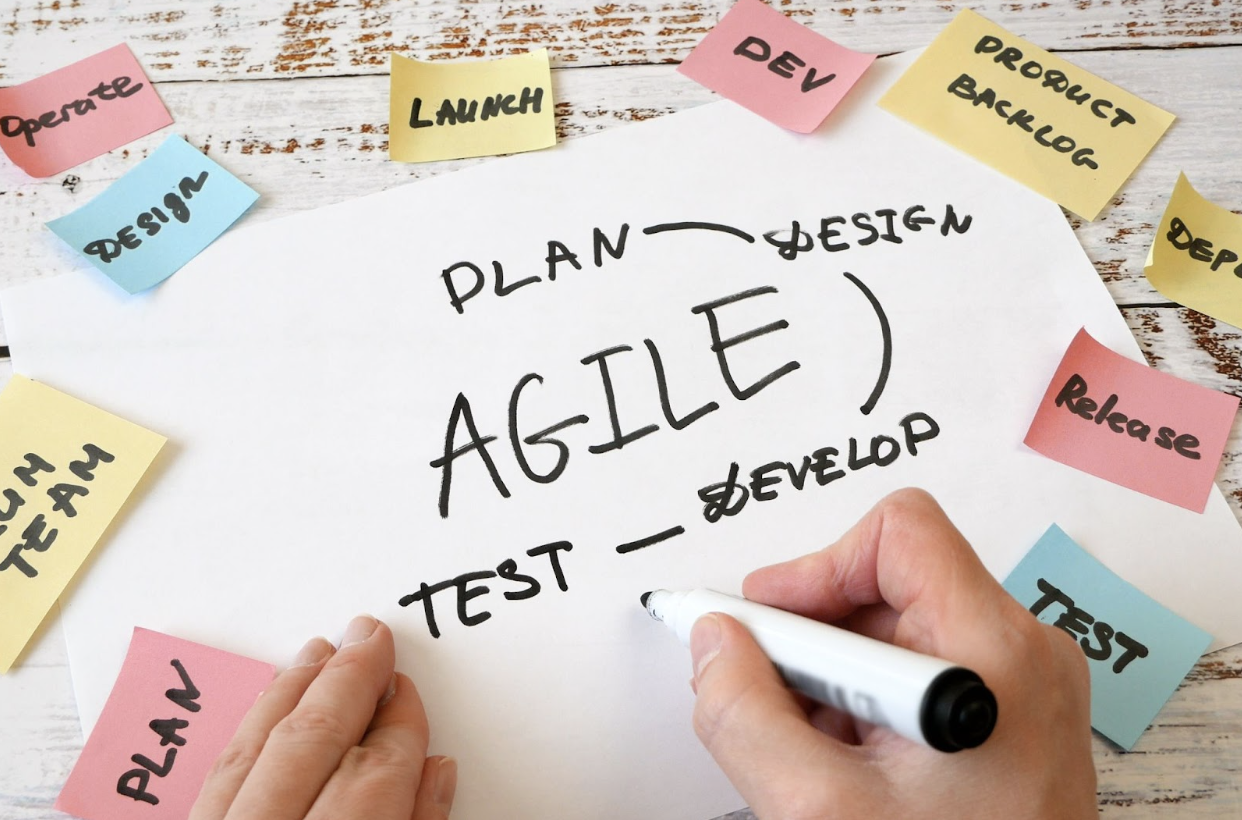Agile product development can be defined as the implementation of software methodologies into the process of product manufacturing. A simple way to put out the concept would be to produce hardware like you produce software. With the help of Agile technologies, a new product can be developed.
What is agile product development?
The concept of agile product development covers a variety of product development strategies and practices that rely heavily on the Agile Manifesto, its core values and principles. Within agile product development, short iterations are utilized to create products. These iterations are valuable in providing continual product feedback and opportunities for swift improvement in processes.
Using the Agile methodology, the product development process is segregated into periodic iterations or sprints that range between one to four weeks. Each iteration begins with a planning session for cross-cultural teams to discuss the tasks that are required to be completed.
An iteration or sprint can be explained as a small project entailing the complete process of product development. At the end of the iteration, a minimum viable product is presented to stakeholders and customers. An MVP is a working product that takes into account the users’ suggestions. Understanding the minimum viable product is important here to ensure a focused and efficient product development process using Agile. Remember, it may take a number of sprints before officially launching the new release to the market.

The Benefits of agile product development
When compared to the conventional approaches of product development, the Agile methodology offers a greater variety of advantages.
The Agile methodology allows businesses and companies to:
-
promptly respond to change,
-
eliminate non-value-added time from the processes, and
-
empower teams to do their best work using Agile product management.
Responding Promptly to Change
Companies respond more rapidly to change when there is a devoted process for documenting product requirements and raking them on a priority basis. A determined product owner is also key to achieving momentous advantages from the Agile process of product development. With such strategies in hand, you change the perspective that stories cannot just be developed for software and hardware.
Eliminating Non-Value-Added Time from Processes
Most of the accomplishments of Agile come from within the Scrum team. When top-notch talent is hired, the company works with a defined leadership style that allows it to get rid of hindrances.
When teams are empowered by senior and middle management,
-
They plan and prioritize their tasks using a backlog. A product backlog in Agile is crucial as it serves as a dynamic product roadmap, allowing teams to prioritize, plan, and adapt continuously.
-
the ultimate focus is getting rid of obstacles rather than micromanaging,
-
there is a higher degree of collaboration and domain expertise, and
-
product allegiance surpasses functional allegiance.
Empowering Teams
Strategic and tactical leaders look forward to knowing that their teams are working smoothly. Business owners want to be certain that their investments will bring them favorable profits and returns as they develop new products.
The Agile product development approach allows teams to set out projects that are seamlessly in-line with the company’s overall strategy. The teams continue to refine product definitions and collaborate with leaders to set clear project parameters encompassing product quality, costs, timelines, and features.
The impact of agile methodology on product teams
While implementing the Agile methodology to your product development cycle, one might ponder over its ability to influence the functions of product development and management.
Typically, the Agile methodology sets out three distinct roles:
-
the product owner,
-
the scrum master, and
-
the team itself.
The functions of product development teams throughout the process resonate closely with the conventional waterfall approach.
You can think of the Scrum master as the project manager. Similarly, the ‘product owner’ can be deemed the product manager. The rest of the team members occupy the same roles as they would in the waterfall approach.
Now where does the difference lie? It is not in the product team, but instead in the team practices!
Although there is a noteworthy difference in the role of a product manager, the ultimate focus here is the most recent release. Rather than centering attention towards the product roadmap, the goal is to build and resonate stories for the agile development team.
Using agile to improve product strategy
While product strategy is typically considered to be a yearly ritual for companies, it shouldn’t necessarily be the case. The Agile methodology can be infused with the overall product strategy and strategic planning. The deal is simple: the management should be open to iterations as the business operates in evolving markets and customer choices. Moreover, in improving product strategy, product positioning has a crucial role. Product positioning in Agile helps your team to align your product’s unique value with customer needs and market trends, and ensure maximum success.
The product vision should serve as a core director throughout the product development cycle, but it can always evolve to respond to unprecedented shifts in the market. This is identical to evolving startups as they flexibly pivot to changing circumstances.
Incorporating the agile approach for new product development
Here are a few important tips to integrate the Agile approach for developing new products.
Rely on the basics: self-organizing teams, iterations, and release plans.
Agile does not have to be an all-or-nothing deal for you. You can adapt Agile frameworks to suit your unique needs. There is no obligation to adopt principles that do not align with your company. Take the first step by incorporating a few practices, such as sprints. You can expand from there, of course. If your program is in its nascent stages, it will be useful to also create a product backlog.
Consider the agile approach as a change management project.
It is time to head back to the foundations of change management. The process of Agile is lengthy, for sure. There will be numerous breakdowns and discoveries throughout the journey. The goal should be to implement Agile in a manner where everyone in the company can visualize its advantages and value its core principles.
Recognize any challenges to agile within your organizational culture.
Be ready to deal with resistance and skepticism when implementing Agile. Some of the challenges arise when you have to give up control. Opting for Agile methodologies is a massive culture change, so it is important to take into account all possible barriers.
Additionally, there are significant differences in the roles of a product manager and a product owner in the Agile framework. Make sure that these changes are communicated effectively.
Work with well-staffed teams in the initial stages
When relying upon the original Scrum framework, it is crucial to have experienced and seasoned talent in key roles. Agile works best with a sense of robust teamwork. This implies the acquisition and retention of top talent. Alternatively, internal recruiting with proactive training opportunities can also provide a great start.
Scrum Master Training
The ultimate leaders of the Agile process are the ‘Scrum Masters.’ They are the custodians of the process, acting as the guardians of the Agile principles. Investing in people through Agile training is crucial. The ongoing nurturing of talent remains a core, albeit sometimes overlooked, tenet of Agile.
The strengths and weaknesses of agile product development
The strengths
-
The Agile approach offers high flexibility. A cycle of continual iterations empowers product teams to flex and reprioritize as projects unfold. Agile teams excel at swiftly embracing change and customizing their deliverables accordingly.
-
Conducting testing at the conclusion of each iteration enables product teams to recognize and address problems in their infancy, averting potential huge setbacks. These rapid feedback cycles are valuable in validating assumptions and gaining a clear understanding of the customers’ benefits.
-
Agile teams roll out more frequent yet smaller releases to their customers. By slicing down the time to market, Agile offers a competitive edge to businesses. It becomes easier to respond to market dynamics by collecting frequent feedback from users.
The weaknesses
-
The Agile approach does not offer a predictable approach in terms of the project timeline, cost, and resources required. At the heart of the Agile methodology lies responding to change by tweaking priorities and requirements. Hence, it may become challenging to follow a plan here.
-
Unlike other approaches, the Agile approach to product development is more time-consuming. It also calls for an unwavering commitment and dedication from every member of the team. There is a continuous need to collaborate and communicate to discuss recommendations amongst cross-cultural teams.
-
The approach may be criticized for its inability to create long-term plans. Whilst focusing too closely on rapidly evolving requirements, the company may start losing direction or lag behind schedule.
Frequently Asked Questions
What are the phases of agile product development?
Agile product development typically consists of phases like ideation, planning, execution (through iterative sprints), testing, and continuous improvement. These phases emphasize flexibility, collaboration, and customer-centricity throughout the product development lifecycle.
What are the 4 stages of agile?
Agile typically consists of four key stages:
-
Inception: The project's initiation, where the team defines the project scope and objectives.
-
Iteration/Execution: The development phase is divided into short iterations or sprints, where features are built and tested incrementally.
-
Release: The point at which a shippable product increment is delivered to customers.
-
Closure: The final stage involves reflecting on the project, gathering feedback, and planning for the next iteration or project.
What are the 5 processes of agile?
-
Initiate: Defining the project scope, objectives, and initial requirements. This is often associated with product backlog creation.
-
Plan and prioritize: Setting priorities for tasks and features, typically done in sprint planning meetings.
-
Execute: Development and testing of product features during iterative sprints or cycles.
-
Monitor and control: Regularly review progress, adjust plans as needed, and ensure that the project is on track.
-
Close: Reflecting on the project, gathering feedback, and preparing for the next phase or iteration.
How to do product planning agile?
In Agile product planning, start by defining clear goals and objectives. Create a prioritized product backlog, breaking it down into manageable user stories. Collaborate with stakeholders to refine requirements. In sprint planning sessions, select items from the backlog for development in short, focused iterations, continually adapting plans based on feedback and changing priorities.
For those looking to deepen their Agile product development skills and results, discover Harvestr. This all-in-one management platform provides a wealth of essential resources, even beyond Agile product development.

